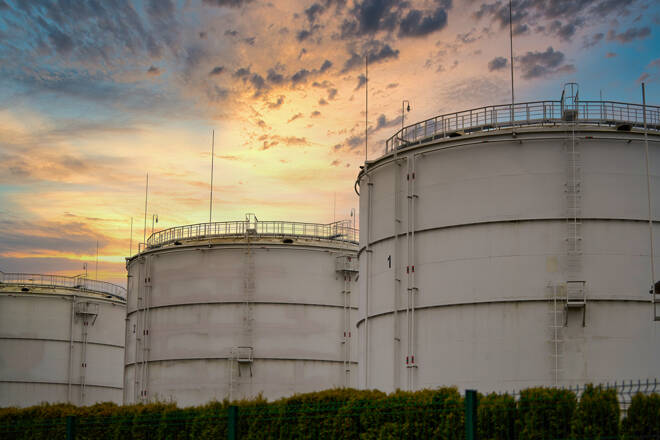Advertisement
Advertisement
Washington SPR Release Keeps OPEC+ Strategy in Place
Published: Mar 31, 2022, 13:11 GMT+00:00
First indicators from the JMCC meeting of OPEC shows that already consensus is there to increase overall output as planned. Reuters indicated that OPEC+ will increase its output by 432,000 bpd in May.
On May 5 a new decision is expected to be made. The unofficial decision, as a vote by OPEC+ still needs to be made, was to be expected, especially after US president Biden announced that he possibly will be releasing 1 million bpd for around 180 days from the Strategic Petroleum Reserve (SPR).
The latter, intended to push oil and gasoline prices down, now seems to be resulting in a situation that the Biden Administration is shooting itself in the foot. By already indicating a new structural and high volume release from the SPR, OPEC is not being pushed to reconsider its own strategies at all, not even with the Russian invasion of Ukraine in mind.
The Biden plan only has resulted in a temporary price tumble, but analysts already have indicated that the long-term effects will be minimal. If Biden even was trying to push back inflation the results are still very foggy. Washington seems not to understand that SPR releases are always limited options, with volumes and periods already decided in the end.
To counter potential disruptions in the market, especially commercial flows being stopped or in the case of Russian oil and gas being self-sanctioned, SPRs don’t really function as a strong and long-term weapon.
History has shown that SPR releases, even in combination with other major OECD members SPR volumes, always only had temporary lower oil prices as a result, while on the long-term price levels bounced back or even went higher. When the market really factors in supply shortages or risks, prices are much more volatile to the upside than when SPRs have not been used or partly emptied.
At the same time, SPRs will need to be refilled again, so additional demand will come to a possible already insufficient supply market. The last SPR releases also didn’t have a long-term price effect.
At the same time, OPEC+ has clearly adopted a position not to react to market and political pressure. In an internal document of OPEC+ it was mentioned that a prolonged Ukraine war will be a major blow to global economy. OPEC+ expects declining consumer and business confidence, with increased inflationary pressures. The latter is causing a possible demand destruction threat, currently already showing its face in markets.
The current OPEC+ strategy, combined with a possible threat on Russian oil and gas supplies, causing potential disruptions, also is supporting higher oil prices for the long-term. A Reuters survey showed that analysts are forecasting Brent crude to average $103.07 per barrel in 2022, which is substantially higher than a previous poll with S$91.15 as consensus.
The total forecasts are mainly based on an expected supply shortage in global markets of between 5-6 million bpd, while demand is still increasing. Shortages in market have increased due to the Russian invasion of Ukraine. The market is still trying to assess the possibility of energy sanctions on Russia if the war in the Ukraine continues for longer.
If prices are going up, demand destruction is expected to be a major factor in H2 2022. OPEC+ strategies are not yet under threat, but some are looking at the potential outcome of the still ongoing Iran JCPOA discussions. A potential deal could bring back some Iranian volumes to the market, but a long-term impact on prices is still not expected.
Overall the market is heading to a major supply-demand crisis. OPEC and its compatriots is not yet willing to show if its spare production capacity is still available or even able to counter demand. The very hesitant or cautious approach being proposed by Riyadh and Abu Dhabi can still go sideways. A major fall-out of the Ukraine war could still hit the market as a Tsunami, the market is still not capable of dealing with a new disruption.
Some could argue that the so-called realism of OPEC Kingpin Saudi Arabia and UAE is maybe a sign of fear for the future. The days of relying on a swing-producer in the Gulf could be over, while the former Shale Swing producer is not yet able to bite again.
About the Author
Cyril Widdershovenauthor
Dr. Widdershoven is a veteran Energy market expert and holds several advisory positions at various international think-tanks and global Energy firms.
Advertisement
